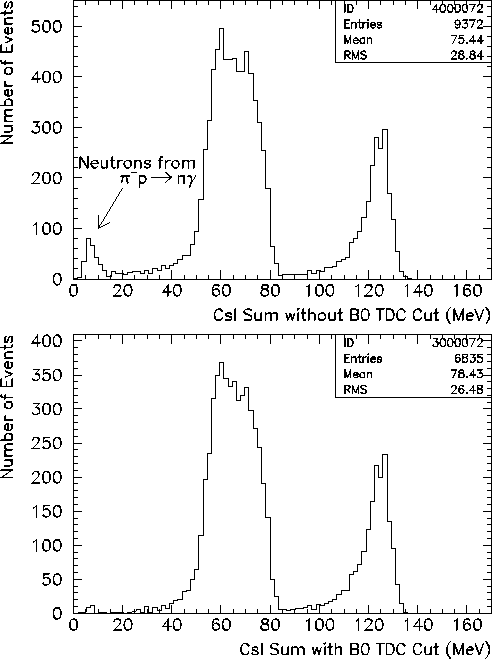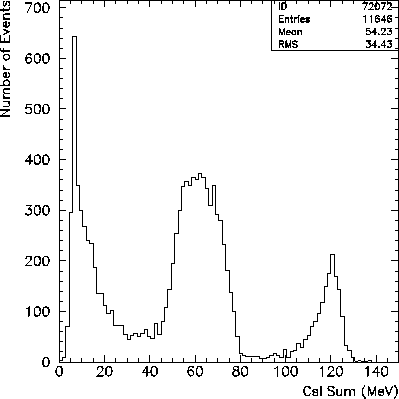Due to the timing cut on the B0 TDC spectrum, it is difficult to avoid cutting out
events from the tails of the ![]() box spectrum and
the 129 MeV
box spectrum and
the 129 MeV ![]() peak. Because of their relatively small pulse heights, these events may
exhibit slewing which places them outside of the timing acceptance window. To remedy
this problem, one can impose an energy threshold
peak. Because of their relatively small pulse heights, these events may
exhibit slewing which places them outside of the timing acceptance window. To remedy
this problem, one can impose an energy threshold ![]() below which all events are
ignored in the extraction of the Panofsky Ratio. In this way, the low energy events
with significant TDC slewing can be ignored.
By varying
below which all events are
ignored in the extraction of the Panofsky Ratio. In this way, the low energy events
with significant TDC slewing can be ignored.
By varying ![]() , one can confirm
that the results of the analysis remain unaffected, which proves that the events
with energies above the
, one can confirm
that the results of the analysis remain unaffected, which proves that the events
with energies above the ![]() threshold are not exhibiting enough slewing to be lost
to the timing cut.
Figure 7.6 shows the one arm trigger spectrum, with and without the B0 TDC
timing cut. Figure 7.7 shows the subset of events which are cut out of the
analysis by the B0 TDC cut. From this figure, one can see that many of the late events
fall into the energy range expected of the neutrons (8.9 MeV
threshold are not exhibiting enough slewing to be lost
to the timing cut.
Figure 7.6 shows the one arm trigger spectrum, with and without the B0 TDC
timing cut. Figure 7.7 shows the subset of events which are cut out of the
analysis by the B0 TDC cut. From this figure, one can see that many of the late events
fall into the energy range expected of the neutrons (8.9 MeV ![]() channels)
channels)

Figure: The spectrum of photons from the ![]() and
and
![]() reactions, recorded with the single arm trigger configuration.
The bottom panel includes the data timing cut on the B0 TDC spectrum
(see Fig. 7.5), and the top panel does not. No more than 4% of the total
energy is deposited outside the central six detectors. The residual low energy events
in the bottom panel arise from from neutrons which are detected early by the
B0 TDC.
reactions, recorded with the single arm trigger configuration.
The bottom panel includes the data timing cut on the B0 TDC spectrum
(see Fig. 7.5), and the top panel does not. No more than 4% of the total
energy is deposited outside the central six detectors. The residual low energy events
in the bottom panel arise from from neutrons which are detected early by the
B0 TDC.

Figure 7.7: Events for which the beam counter 'B0' TDC is less than 97.0 ns or greater than
104.0 ns. These events are excluded from the data set used in the Panofsky Ratio
calculation.